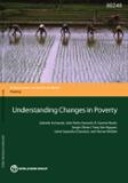Explore

Understanding Changes in Poverty
5 Ungluers have
Faved this Work
Login to Fave
Understanding Changes in Poverty brings
together different methods to decompose the contributions to
poverty reduction. A simple approach quantifies the
contribution of changes in demographics, employment,
earnings, public transfers, and remittances to poverty
reduction. A more complex approach quantifies the
contributions to poverty reduction from changes in
individual and household characteristics, including changes
in the sectoral, occupational, and educational structure of
the workforce, as well as changes in the returns to
individual and household characteristics. Understanding
Changes in Poverty implements these approaches and finds
that labor income growth that is, growth in income per
worker rather than an increase in the number of employed
workers was the largest contributor to moderate poverty
reduction in 21 countries experiencing substantial
reductions in poverty over the past decade. Changes in
demographics, public transfers, and remittances helped, but
made relatively smaller contributions to poverty reduction.
Further decompositions in three countries find that labor
income grew mainly because of higher returns to human
capital endowments, signaling increases in productivity,
higher relative price of labor, or both. Understanding
Changes in Poverty will be of particular relevance to
development practitioners interested in better understanding
distributional changes over time. The methods and tools
presented in this book can also be applied to better
understand changes in inequality or any other distributional change.
From the Open Knowledge Repository at the World Bank.
From the Open Knowledge Repository at the World Bank.
Why read this book? Have your say.
You must be logged in to comment.
Editions


